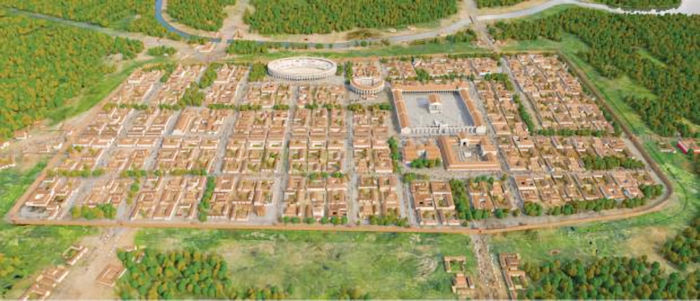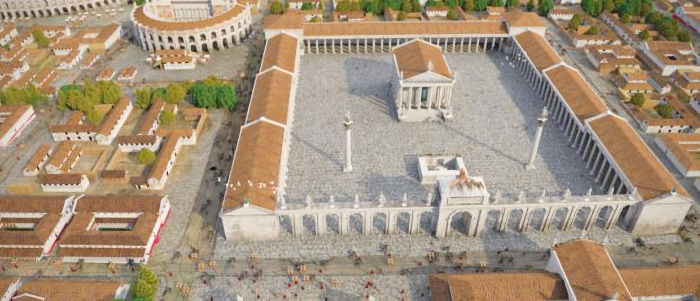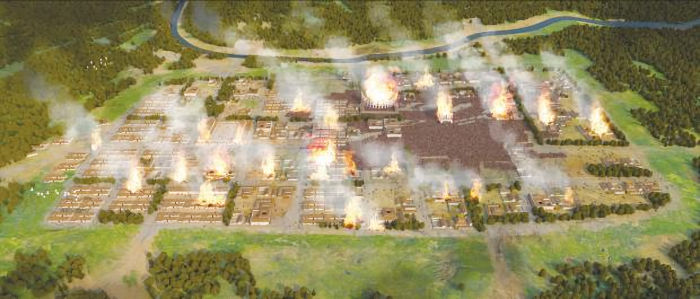Jan Bartek – AncientPages.com – During Roman times Colchester was known as Camulodunum.
Located in EsSєx, 80 km northeast of London, in what was the territory of the Trinovantes, the Roman occupation of Camulodunum began in the AD 40s. Roman Emperor Claudius (10 B.C – 54 A.D.) personally oversaw the Roman attack on Camulodunon. The town was renamed Colonia Victricensis in honor of his triumph, and a temple was built there to worship him.

A 3D model reconstruction of what Camulodunum looked like during Roman times. Credit: Joseph Chittenden
“The Claudian expedition was not a sudden, brutal invasion, but part of a longer process that gradually drew Britain into the Roman world. Not all British tribes were happy to accept Roman ” 1
Camulodunum was a focal point of the Boudican revolt.
“The Iceni people were British Celts who occupied the area of modern Norfolk, Cambridgeshire, and northwest Suffolk. The tribe represented a significant power in eastern Britain during Claudius’ conquest of Britain in 43 AD. In 61 AD, Boudicca raised the Iceni and the neighboring Trinivantes tribe in revolt against Roman rule.” 2
The ancient history of Colchester is rather well-documented, but what did the town look like during Roman times?
Concept designer Joseph Chittenden decided to find out and the result of his research is an astounding 3D model he created after having consulted with the Colchester Archaeological Trust.

Credit: Joseph Chittenden
The model shows where key sites across Colchester would have been including a Basilica, temple, and theatre.
Chittenden’s work displays key events during the Roman period including the attack by Boudica and her 120,000 followers.
“I noticed that apart from Phillip Crummy’s City of Victory book, there weren’t many books which showed what Roman Colchester actually looked like.
I thought I could use my 3D software to produce a fully computer-generated model to show the whole of Roman Colchester.
The model was built with hundreds of buildings, thousands of people, trees and special effects such as fire were also added.
I wanted the reader to have a drone’s eye view of key events and sites of Colchester.

The model also shows the attack by Boudica and her 120,000 followers. Credit: : Joseph Chittenden
One of the ones that had to be included was the attack by Boudica and her 120,000 warriors. This image involved showing all the warriors and the huge fires,” Chittenden told the Gazette News.
Chittenden has now produced a tourist guide book with each site or event having a modern-day map.
To find out more about Chittenden’s work visit www.jc3dvis.co.uk
Camulodunum is possibly the oldest Roman town in Britain and was reportedly the first capital before London. It was one of the three largest and most important towns on the island.
Written by Jan Bartek – AncientPages.com Staff Writer





